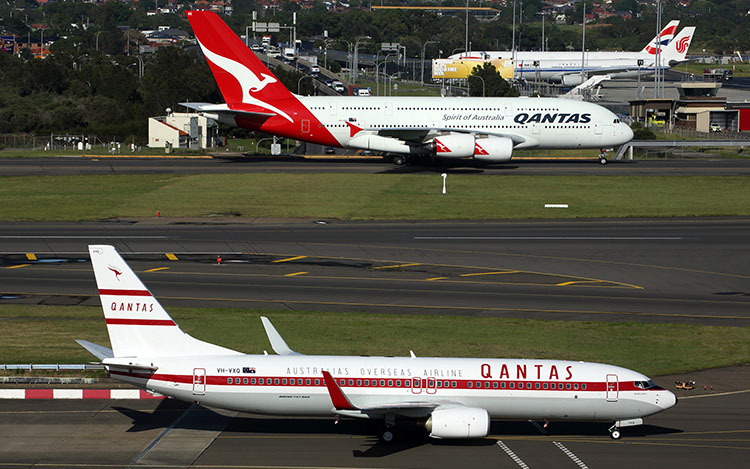
Qantas says it is continuing to grow capacity along Australia’s east coast and on leisure routes while removing seats to destinations impacted by the slowdown in the mining sector.
The airline group’s latest traffic and capacity statistics released on Thursday showed capacity across Qantas and Jetstar’s domestic networks, measured by available seat kilometres (ASK), grew 6.4 per cent in February, compared with the prior corresponding period.
The increase comprised “growth on East Coast and leisure routes, right-sizing of capacity in weaker resources markets as well as the impact of the extra day in February 2016”, Qantas said.
Qantas’s domestic ASKs rose 5.1 per cent in February, while demand measured by revenue passenger kilometres (RPK) grew 5.3 per cent. Load factors were up 0.1 percentage points to 71.7 per cent.
Meanwhile, Jetstar’s domestic ASKs were up 9.5 per cent in the month. However, with RPKs expanding at a slower 6.2 per cent, load factors fell 2.5 percentage points to 81.8 per cent.
“Group domestic revenue per available seat kilometre (RASK) was lower compared to the prior corresponding period, with increased traffic during the Cricket World Cup in February and March 2015 providing a one-off boost to unit revenue,” Qantas said.
“Revenue from resources routes was lower than in the prior corresponding period, in line with previous guidance.”
Qantas said in February revenue from resoures-related routes was down $50 million in the 2015/16 first half, with a further $50 million hit expected in the current half.
In terms of international routes, Qantas said its overseas network experienced ASK growth of 10.3 per cent in February, due to the recent introduction of new routes to San Francisco, which started in December 2015, as well as new capacity to Tokyo (launched August 2015) and additional services to Singapore and Hong Kong.
The bulk of that additional capacity has been absorbed by the market, with Qantas international network RPKs up 8.6 per cent in February. Load factors fell 1.2 percentage points to 79 per cent.
Meanwhile, Jetstar’s transition from Airbus A330-200s to the Boeing 787-8 Dreamliner has contributed to the 16.8 per cent rise in ASKs in the month. And with RPKs growth of 18.1 per cent outpacing the increase in ASKs, Jetstar international’s load factors were up 0.9 percentage points to 81.3 per cent.















